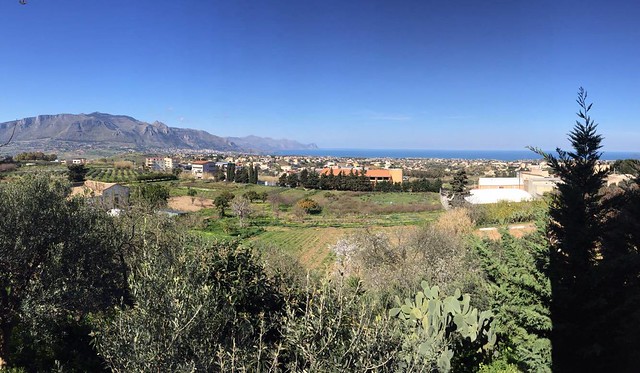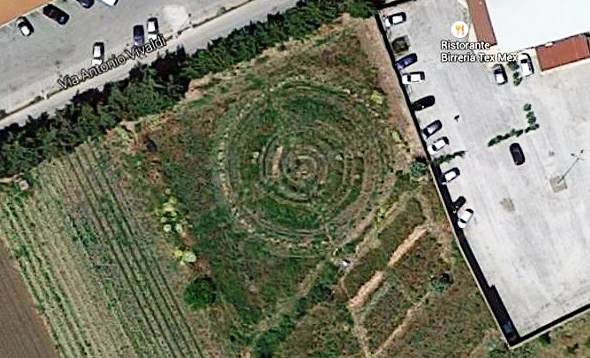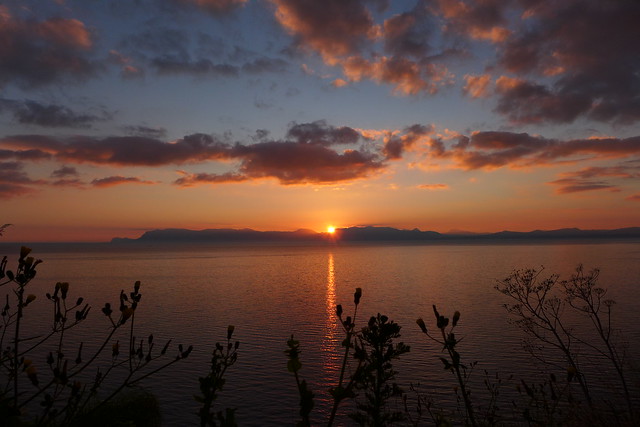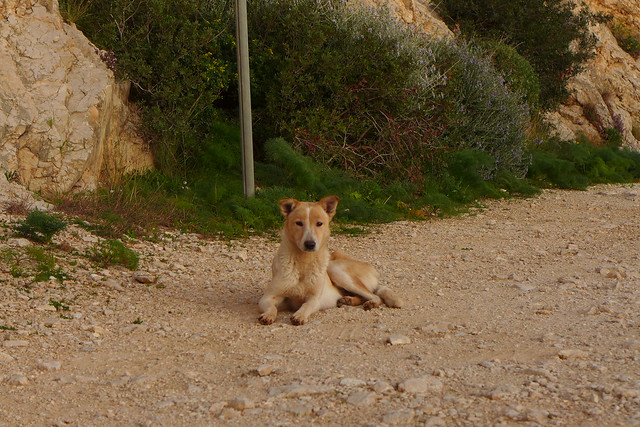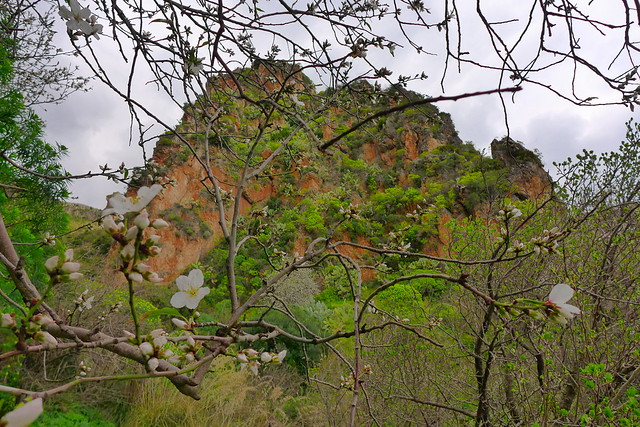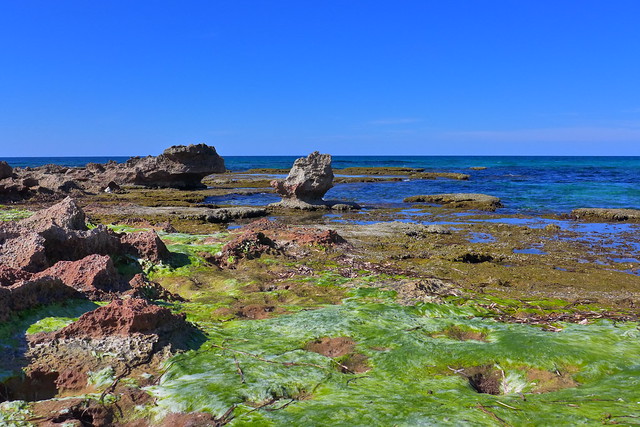Honesty, Courage and the transforming power of Anger
This chapter will bring a concrete, real context to these three lofty concepts.
We’re in search of good quality Olive oil and this leads us once more back to Alcamo, where we meet Vincenzo, a permaculture farmer. Alcamo is a city perched on the side of a steep hill and narrow streets abound, so rather than finding his garden in our Emma, we arrange per telephone to meet him in a convenient car park. Vincenzo arrives with 10 litres of Olive oil strapped to the back of his bike. This is how he likes to distribute his produce. He’s got a car but hasn’t even bothered to renew the insurance because he doesn’t use it.
We are intrigued. In many of our previous blogs, we have talked about our ‘fights’ and efforts to persuade the Sicilians we meet to change their habits if not their views on unsustainable farming or rubbish removal systems, more often than not to be met with a hard rock of resistance, if not derision of our ‘crazy’ ideas. We’ve come to understand some of the obstacles that are in the way of change here and we realise that life in Sicily is hard, especially inland. What brought Vincenzo, who used to live down by the sea, back to his town, and what made him a permaculture farmer, and how is this received by his community? Vincenzo starts to tell us his story….
At age seven, Vincenzo lost his father, a well-known public figure in Alcamo and a respected Endocrinologist, due to cancer of the thyroid. Even though he was an expert in his field, he didn’t relate his illness to the pollution of this town, Vincenzo says. Come and visit my garden and I will show you what I mean.
He leads us down a couple of back streets and suddenly the tightly packed houses give way to an open space right in the heart of the town (not unlike it used to be in Totnes when Heath’s nursery still existed, unfortunately long since turned into car parks and, I believe, now up for grabs to developers). We come past a marble cutter’s place where a man quickly climbs into a white flashy car and shoots off past us. This is my worst enemy, says Vincenzo, with a smile on his face. I instantly feel so uncomfortable that I avoid looking at the man’s face, but Vincenzo looks him straight in the eye. See, when he needs to get rid of used oil from his machines, he just pours it into the ground, and his property is right next to mine. I had my water tested and it is full of oil, amongst other bad substances. I cannot use it on my fields, let alone for drinking. It turns out that testing the water made him realise he had to turn to a farming method that didn’t require regular watering of his fields. We pass the marble quarry, now almost shut down, 50 metres of a sheer cliff, with houses perched on the top. Alcamo has no sewage system. The whole town is built on a porous rock, and people just dig holes in the ground and let their black water seep away underneath their houses, Vincenzo says. Look, you can see where the black water runs down the sheer rock, and then compare it to this place, where clean water comes out of the rock. The colours on the rock are indeed completely different. And look at these long concrete pipes that come down from the houses outside, along the rockface. They are sewage pipes, but they are more than 30 years old and they are breaking, look how they leak. I have called the man from the council who installed these, I took him round on a walk to discuss what can be done to this but he simply shrugged his shoulders. We walk up a couple of steep hairpin bends on a rickety road. When I started farming my land, first I only cared about cleaning my own property but I soon realised that I needed to clean the space around it too, as no-one else was caring for it. This part of the town used to be full of rubbish, abandoned cars, plastic, Asbetos etc. Everybody just came and dumped their stuff here and the area was frequented by drug addicts. But it is the road to my land and to my house, my grandfather’s house in fact, so I started cleaning it up and patrolling it every day. I would interrupt people who were up to no good and just made them realise they couldn’t do things unseen. So gradually they disappeared from here. A couple more turns in the road and we have an overview of what must be the blackest, murkiest pond I’ve ever seen, wedged in between the marble quarry and Vincenzo’s land. This water is so polluted, at the moment only goldfish and guppies survive in it, I have to think what can be done with it to clean it, what plants I can put in it to help it regenerate itself. Just two weeks ago, the mafia boss of the area has been caught and put into prison and Vincenzo hopes that this will open some doors for a more sustainable town planning. This place could become a green lung of the town, once the quarry is properly shut and if the right decisions are being made about this open space. It might of course just be sold to developers, but I have a hope, a great hope, that we will fight for a better solution.
The road arrives at the top level above his house, where we pass a high wall. Vincenzo tells us that behind this wall is a yard full of chemicals – a depository for herbicides and pesticides (later we catch a glimpse from the first floor of his house onto hundreds of plastic sacks full of chemicals, just lying around in the open air). Before we enter the courtyard of his house, Vincenzo points out one more thing: a neighbour has built a house from plastic. With every rain, plastic beads wash off this house, down my road and into my garden. And indeed, we can see thousands of tiny plastic beads in the muddy ruts on the road.
In the ten minutes that it took us to walk from our van to his house, Vincenzo, with a smile on his face, has described his situation and it’s breaking my heart, moving me to tears. He’s trying to create paradise in the middle of hell!
Vincenzo opens a metal door and we are greeted by Vito, his lively dog, a mixture of German shepherd and husky, maybe a bit of wolf in there too. It’s the kind of dog you would not like to be enemies with, but to us he’s friendly and eager to be stroked. Six years ago, I was very depressed about my situation. I was angry about everything. I decided to go on a long walk. Together with Vito, I walked from Alcamo to Petralìa Sottana. He is a difficult dog. Before I got him, he’d been tied to a tree for the first year of his life and he was frightened and angry. When we went on this walk together, he was on a rope that wrapped around my waist, so for several months he was connected to me as if through an umbilical chord. We fought a lot of fights together, he wanted to attack people and animals so we had a lot of arguments. Now he is a lot better.
To me, it seems as if Vito is the personification of Vincenzo’s inner state and their journey together says as much about the transformation of the dog as it does of Vincenzo. I am amazed by the sheer persistence of this young man in the face of all these intractable problems around him and of the softness he has acquired, which nevertheless is unremitting and persistent in pursuing a change for the better of the environment in general and his land in particular.
The yard of his house is a little oasis with a beautiful view down the hill, overlooking his land and towards the sea. A giant mulberry tree spreads its branches. It’s taken me some years to understand why Mulberry trees are always right by the houses in Sicily. It’s not ideal – the berries make a mess on the ground – but if you plant them away from the house, the birds will eat all the berries before they are ripe and you have no chance to harvest them. Near the house, the birds are scared off by cats and dogs.
In permaculture terms, the house is zone zero and the courtyard is zone one. Through a little gate, Vincenzo leads us down into zone two, the food forest. Here are olive trees and almond trees, but above all, a richly varied undergrowth of wild herbs and plants, most of which are edible and have planted themselves here, and he only gently encourages some and discourages others. Last year, a sheep grazed here, helping to spread the seeds through carrying them in its fleece from one place to the other, all the while fertilising the land with its manure. After the food forest comes a stretch of land that doesn’t belong to Vincenzo but to a cousin, someone he has battled with over the years to prevent him burning plastics on his land. I used to get very angry with my cousin. One time I even threatened to kill him with a pickaxe if he didn’t stop killing others by burning toxic rubbish. But slowly, slowly over time, we have come to agreements with each other and now we even occasionally help each other, sharing machinery to remove rubbish etc. It’s been hard work fighting with each other, but I feel good about the changes.
We have arrived at his land, zone 3 in permaculture terms, where we are greeted by an orange tree veritably dripping with fruit. Vincenzo is convinced that the only reason this one is so rich in fruit compared to the others further down the land of his cousin’s, is that he planted a companion plant right by the tree which flowered exactly at the right time and attracted many bees who in turn pollinated the orange tree.
Further down along his land, different herbs are planted in the shape of a large spiral, and everywhere we see the wild versions of cultivated plants, such as the wild beet.
Vincenzo explains that when he sees that another plant has ‘arrived’ on his land, he frees the space around it for a while, to give it a chance to grow, but that is all. This part of my land is still very much in progress. In the long run, I’d like it to be a food forest too, like the one near my house, says Vincenzo, as the three of us pick a huge piece of fluttering plastic out of a hedge, something he says just flies in on the wind, on a daily basis.
We slowly return to the house, meanwhile picking lots of different wild herbs and sampling the various tastes. Vincenzo also cuts us some of his more deliberate produce: a large leaf of Aloe Vera, which, he explains, needs to be about 5 years old before you pick it to have developed the more than 200 different curative ingredients; artichoke leaves, which you can also steam like the fruit (we try this later but omit to peel the stems so it’s really bitter, but still very tasty!); some remaining almonds from the trees, and a bag full of oranges. Apparently an infusion from olive leaves is also very curative…
Vincenzo comes back to the van with us, bringing Vito with him. As we come past the marble cutter’s property, Vito becomes restless, straining at the leash. I’ve made it part of my daily routine to come past here and have a look what my worst enemy is up to. I like to create a presence, so he knows I’m watching him. I could denounce him, I have proof of the pollution in my water results, but I prefer to try and make him see that he is doing wrong and change his habits of his own accord.
This is the part I am most impressed by. There is such creative determination in Vincenzo to not just do his own thing and produce vegetables but to make people see things in a different way. I used to plant vegetables in this patch, he says, pointing to a part of his land, where after a rain black water from the town and otherwise polluted water gathers and builds a fertile if toxic ground, and then I used to go and offer them to my neighbour telling him that if he thinks it doesn’t matter what he puts into the ground, at least he can buy the toxic vegetables from me and eat them. One day, he even takes his toxic vegetables to a large bio market, and, by clearly advertising them as ‘Toxic Vegetables’, raises a lot of discussion and conversations with buyers and producers alike. But now I have stopped planting produce there, this part of my land needs to regenerate itself first. On the other parts of my land, my produce is as pure as it can be in this area.
This of course raises the big question of how clean anyone’s vegetables are, anywhere in this world. One can grow as ‘organic’ as one likes, but what do you do if tap water is too polluted to use on your produce, and even a squall of rainwater brings its problems in the form of microbeads and black water from untreated sewage. As a consumer, how do we know what is in our food? Should we enquire further, or contend ourselves with looking at the label on the supermarket shelf, possibly lulling ourselves into a false sense of security? And if we do enquire further, how do we support those who lobby for a cleaner environment? How do we protect and nurture courageous individuals like Vincenzo who are fighting battles on our behalf?
I could of course sell my house and this piece of land – as it’s in the heart of the Alcamo, I’d probably get a good price for it – and move to a place that is cleaner, where I have more likeminded neighbours and where I could grow ‘cleaner vegetables’ in peace. But this is my family’s land, my grandfather’s house, why should I leave? Besides, this place needs me, it is here that change is most needed.
I take my hat off to you, Vincenzo. I have a huge respect for what you are doing. Thank you for showing us your place and giving us a glimpse of your life with your story. You are truly inspirational.
Posted in Uncategorizedwith comments disabled.
La Riserva Naturale di Zingaro
On our way through to the nature reserve, we stop off in San Vito lo Capo to stock up with food and water. By the time we get going again, darkness has settled so we can only guess at the beauty surrounding us as the road snakes up and down and in and out, 8km along the coast before coming to a gravelly halt on the gates of the reserve. We are the only ones there, apart from a car with locals who seem to be up to some naughty night fishing (fishing is not allowed in the reserve), but we chose to ignore the obvious fishing rods in their packs and focus instead on the two dogs who seem to have crept out of a hollow under a bush by the side of the road, wagging their tails and looking rather hungry and dehydrated. We offer water and some food, which they lap up gratefully. It is a beautifully quiet and starry night and we all settle in for the night: The female dog slinks off to somewhere, to male curls up under the engine of our Emma and Frank and I tumble into bed after a round of Canasta.
We are blessed with a beautiful sunrise.
The minute we come out the next morning we are greeted excitedly by our newly found friends. As the female looks like she might be a feeding mum, I decide to check on the spot where I saw them emerge the previous day, and indeed, there are five beautiful pups.
In the time that it takes us to do our morning things, Yoga, make food for the day, practice the violin etc., several local cars have arrived and on their way, they stopped and looked at the pups and possibly gave some food to the parents. Someone even tips out half a big sack of dry dog food, but the dogs don’t seem to want to touch it, preferring our protein mix of tuna, chick peas and oat milk instead. Perhaps dry dog food can only be digested if the dog has sufficient access to drinking water, which must be difficult here.
Sicilian strays have a much better life than their counterparts in Spain or Portugal. Here, they seem to belong to a place, like for example to the entrance of this nature reserve, and they seem to be looked after by anyone who happens to come along. Generally, they are quiet and friendly, and in this case it was surprising to see how involved the father of the pups was – he seemed to be more protective of them than the mother!
We pack a picnic and set out into the nature reserve. The mountains rise out of the sea and up to over 1000 mtrs, and there are many paths to explore. We spend a day making a round trip including a museum village and only cover about half of the distance to the Southern entrance. One could easily spend a few days here to discover the different paths, villages and caves, and chill out on the beautiful beaches.
After a late afternoon swim on an almost tropical looking beach, we return to our van in time to take my bicycle to the repair shop in San Vito lo Capo. This is a shop that opens at Sundown, as its owner, Daniele is an outdoorsy kind of person, heavily involved in the local climbing scene.
This was one of the most beautiful days we’ve had in Sicily, stunning views and beautiful smells. It was also a really good physical challenge, including climbing up the mountain for about 2hours to get to the museum village. The day was only slightly marred at the end by Frank’s fall backwards against a rock when he tried to find a short-cut through the undergrowth…
Do visit this link to see all the photos of this day. It is worth using the slide-show function by clicking a little icon on the top right hand side of the display!
Posted in Uncategorizedwith comments disabled.
Macari Beach
On our way towards the most western point of Sicily, we stop off at Macari Beach.
The photos speak for themselves!!!
Do visit this link to see all the photos of the beach. It is worth using the slide-show function by clicking a little icon on the top right hand side of the display!
Posted in Uncategorizedwith comments disabled.
Mozia and the Salinas
We leave Sciacca and the Carnival behind us in search of Quiet, hoping for beautiful views of sunsets and empty beaches during the next part of our trip. Someone recommended a visit to the salt marshes on the west coast, and in particular to Mozia, once a Phoenician settlement, now a museum island. We arrive some time late afternoon and share a little car park with another campervan right on a land spit where a wooden pier reaches a long way out into the still, shallow waters. We decide to have a quiet afternoon and a slow next morning there, watching the changes of the light on the water as the sun sets and rises, we breathe in the sweet-salty smell of the lagoon and chill, reading books and sharing good food. Our ‘neighbours’, a Belgian couple, are just about the least communicative people we’ve found on our journey so far, so it’s as if we have the bay to ourselves.
I enjoy a good Yoga session the next morning on the wooden pier, out on the water and facing the rising sun. We feel blessed.
Mozia is indeed special. A little ferry takes you across the shallow waters and drops you off to peruse the island at your leisure. We start by visiting the museum and then take a walk anticlockwise around the circumference of the island, stopping off in the lee of the wind for a picnic. I don’t normally get excited by old stones and their history, but there are indeed some beautiful exhibits in the museum and the walk around the island reveals many other special places, plus a large variety of plants, many of which are in flower now. It is also blissfully quiet, as there are no cars on the island and we seem to be the only people, apart from those who run the museum. This place, like many others in Sicily, must be heaving in Summer…
For more photos, please click here
Posted in Uncategorizedwith comments disabled.
